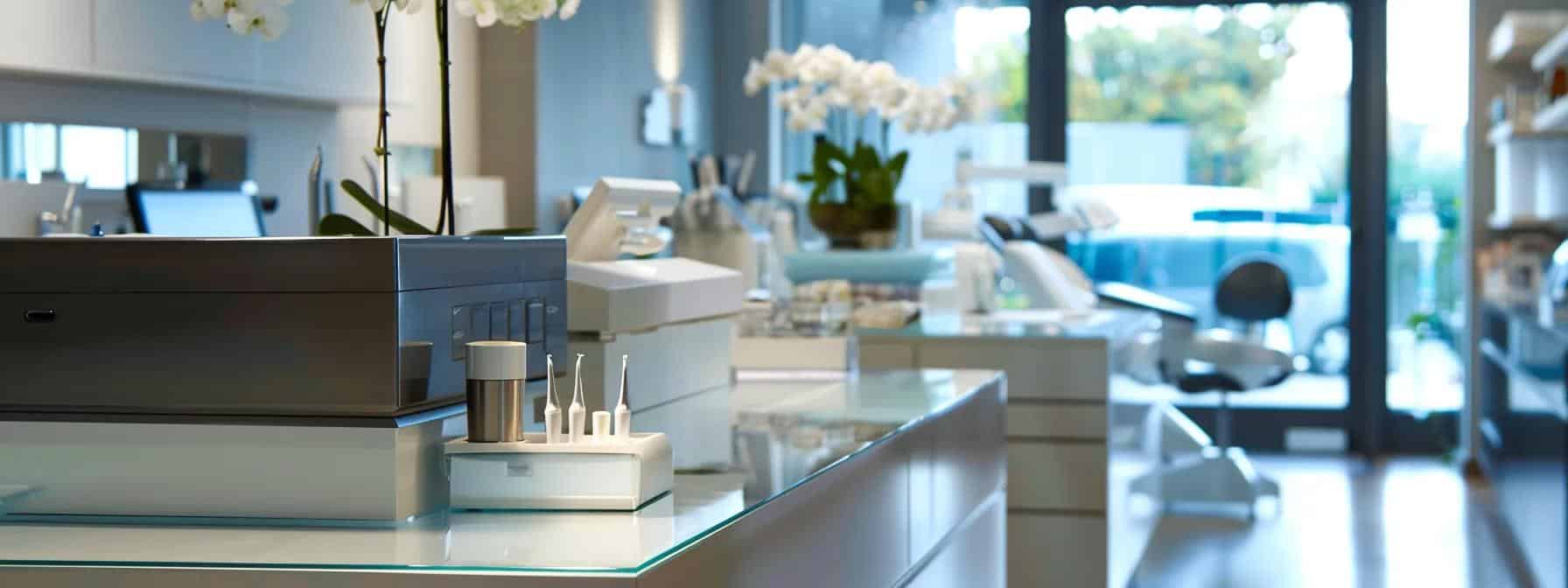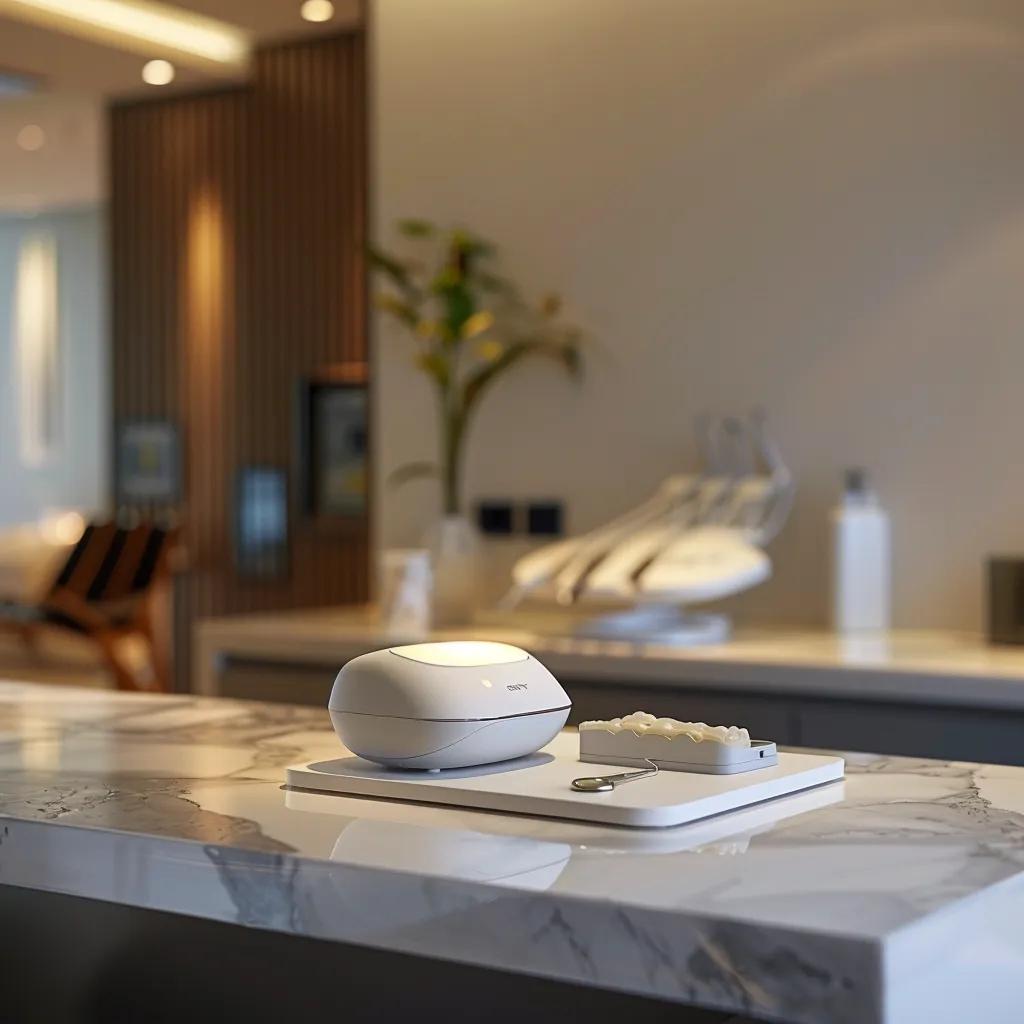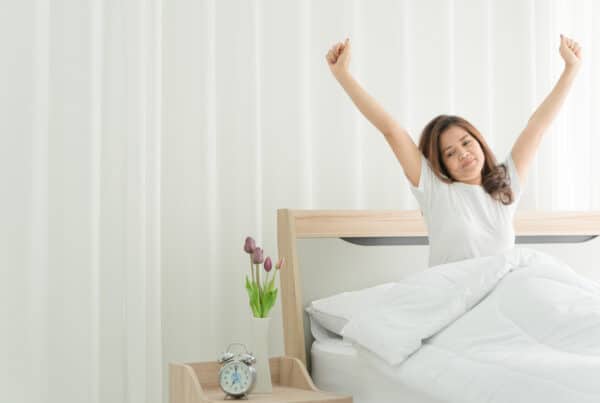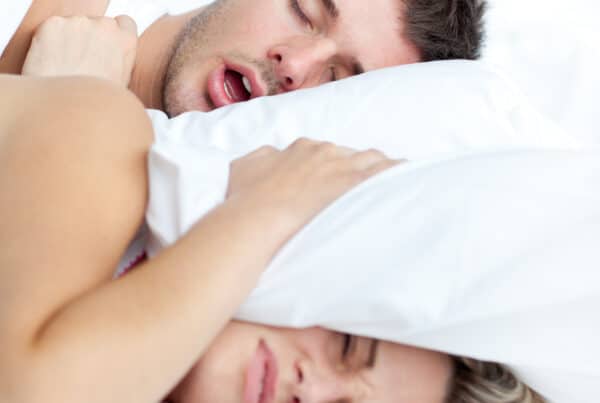Rethinking How We Treat Sleep Apnea
For millions of adults, restless nights and groggy mornings are more than an annoyance—they’re the symptoms of a serious and often overlooked health condition: obstructive sleep apnea (OSA). Traditionally treated with bulky CPAP machines, OSA is increasingly being managed through a more approachable, patient-friendly option—custom oral appliances provided by dental professionals trained in sleep medicine.
The field of dental sleep medicine is growing rapidly, and for good reason. Oral appliance therapy offers a non-invasive, highly effective alternative for patients who either can’t tolerate CPAP or prefer a simpler, more portable solution. These devices represent a significant shift in how sleep apnea is treated, particularly for those with mild to moderate cases who might otherwise go without care due to discomfort or inconvenience.
At Dr. Eugene Azuma’s practice, we specialize in these dental sleep apnea solutions. In this article, we’ll explore what OSA is, how oral appliances work, how they compare to other treatments, and what patients can expect at every stage of care—from the initial consultation to long-term management.
Understanding Obstructive Sleep Apnea (OSA)
Obstructive sleep apnea occurs when the muscles in the throat relax excessively during sleep, causing a blockage of the airway. This blockage leads to repeated breathing interruptions—sometimes hundreds of times per night. These apneic episodes result in drops in blood oxygen, fragmented sleep, and over time, a cascade of health issues that extend far beyond fatigue.
Common symptoms include loud snoring, waking up gasping or choking, morning headaches, and excessive daytime drowsiness. Over time, these disturbances take a toll on the heart, brain, and metabolic systems. Left untreated, OSA is linked to increased risks of high blood pressure, stroke, heart disease, diabetes, and even depression. What makes it even more dangerous is that many patients remain undiagnosed, chalking up their exhaustion to stress or age.
By understanding the symptoms and risks, patients can take proactive steps toward diagnosis and treatment. Dental professionals like Dr. Azuma play a vital role in recognizing signs of OSA during routine exams and helping patients receive the appropriate evaluations and therapies. When identified early and treated appropriately, the negative health effects of OSA can be dramatically reduced or even reversed.
How Oral Appliances Work for Sleep Apnea
Oral appliance therapy involves the use of small, custom-fitted devices that are worn during sleep to prevent airway collapse. These devices reposition the lower jaw (mandible) or hold the tongue in place to maintain an open, unobstructed airway throughout the night. They are most effective for patients with mild to moderate OSA and for those who cannot tolerate CPAP.
There are two primary types of oral appliances. The first is the mandibular advancement device (MAD), which gently moves the lower jaw forward. This forward shift enlarges the airway and keeps the soft tissues from collapsing into it. The second is the tongue-retaining device (TRD), which uses suction to hold the tongue forward, also helping maintain airway patency. Both aim to reduce airway obstruction, snoring, and the frequency of apneic events.
Key Benefits of Oral Appliances:
- Custom fit: Designed specifically for each patient’s dental structure
- Portability: Easy to travel with—no cords or machines
- Quiet operation: Unlike CPAP, these devices produce no noise
- Ease of use: Simple nightly routine that doesn’t disrupt sleep
Custom fitting is essential to success. At Dr. Azuma’s practice, we take digital scans and impressions to fabricate precise, comfortable devices. We also perform titration adjustments, fine-tuning the device’s settings to optimize comfort and results. Follow-up appointments ensure that any discomfort is addressed early and that the therapy remains effective long-term. Proper fit and titration are the difference between an appliance that merely feels wearable and one that significantly improves health and sleep.
Comparing Oral Appliances to CPAP and Other Treatments
Continuous Positive Airway Pressure (CPAP) therapy is often considered the gold standard for OSA treatment. It involves a machine that delivers a constant stream of air through a mask, keeping the airway open. While CPAP is highly effective in reducing apnea-hypopnea indices (AHI), its use can be limited by patient discomfort, noise, skin irritation, and the difficulty of traveling with equipment.
Oral appliances offer a compelling alternative. While they may not be suitable for patients with severe OSA, for those with mild to moderate forms—or those who are CPAP-intolerant—they can deliver comparable results. In fact, patient adherence to oral appliances tends to be significantly higher, which ultimately improves treatment outcomes and real-world effectiveness.

Comparison at a Glance:
- CPAP: High efficacy, but low adherence due to discomfort and complexity
- Oral Appliance: Moderate to high efficacy, with high patient adherence
- Surgery: Potentially effective, but invasive with longer recovery and risks
In real-world use, an effective treatment is one a patient will actually follow. Oral appliances, by virtue of their simplicity and comfort, often succeed where CPAP fails. And for many, they represent a life-changing improvement in both sleep quality and daily function.
Patient Experience and Outcomes
Embarking on oral appliance therapy begins with a detailed consultation. At your first visit, Dr. Azuma and his team will review your sleep history, assess your airway anatomy, and discuss your symptoms. If you haven’t already undergone a sleep study, we’ll coordinate a referral to a sleep physician for diagnostic testing to confirm whether OSA is present and how severe it is.
Once a diagnosis is confirmed and oral appliance therapy is recommended, we proceed with digital scans or impressions. These are used to fabricate a custom-fit device that matches your bite and jaw alignment. Once delivered, you’ll begin wearing the appliance nightly, with follow-ups scheduled to monitor fit, comfort, and progress. This process typically spans several weeks, with adjustments made during titration to ensure optimal outcomes.
Real-World Results Include:
- Reduced snoring: Often reported within days of beginning therapy
- Improved daytime energy: Less fatigue and better focus at work or school
- Better mood and clarity: Reduced irritability and cognitive fog
- Fewer health complications: Lower blood pressure, improved metabolic markers, and improved heart rate variability
Side effects, when they occur, are generally mild and manageable. These may include jaw tension, salivation changes, or minor bite shifts. Our follow-up visits are designed to catch and address these issues early. With proper care and adjustment, most patients enjoy long-term success and high satisfaction. Many even report that oral appliance therapy helps their partners sleep better, too.
Dr. Eugene Azuma’s Expertise in Dental Sleep Medicine
Dr. Eugene Azuma is a respected leader in dental sleep medicine with years of specialized training. He has helped countless patients discover the life-changing benefits of oral appliance therapy. What sets his practice apart is a commitment to collaboration, innovation, and compassionate care.
By partnering with sleep physicians and other specialists, Dr. Azuma ensures that each patient receives a complete care plan—not just a device. This multidisciplinary model improves diagnostic accuracy and treatment precision, and it provides peace of mind for patients who know their providers are working as a team. In a field that is still growing, this level of coordination is vital to successful, long-lasting results.
Our clinic also emphasizes accessibility. We accept most major insurance plans and offer flexible payment options. With 24/7 support, bilingual staff, and a focus on patient education, we make sure every person who walks through our doors is equipped, empowered, and supported from start to finish. We treat patients like family—because that’s how care should feel.
Choosing the Right Path Forward
Not all sleep apnea patients are the same—and neither are their treatment needs. At Dr. Azuma’s practice, we personalize every step of care, from the first consultation to the final adjustment. Our goal is to match each patient with the therapy that best fits their lifestyle, anatomy, and health goals.
This begins with a thorough screening and a collaborative care model that integrates dental and medical expertise. Whether you’re new to sleep apnea or seeking an alternative to CPAP, we help you make an informed, confident decision about your health. We understand that trust and transparency are just as important as technology and training.
Why Patients Choose Oral Appliances:
- No masks, tubes, or machines: Quiet, comfortable, and easy to wear
- Minimal side effects and easy to use: No hoses or power cords
- Improved sleep without disruption to partner: A win for the whole household
- Effective for many patients who can’t tolerate CPAP: Especially those with mild to moderate OSA
Sleep apnea doesn’t just affect sleep—it affects your energy, relationships, focus, and health. The good news? Treatment doesn’t have to be complicated. With the right provider and the right plan, relief is possible—and often easier than you think. Your journey back to restful, restorative sleep starts with a conversation.
Conclusion: A Better Night’s Sleep Starts Here
At Dr. Eugene Azuma’s practice, we don’t just treat snoring—we restore lives. Through personalized oral appliance therapy, we help patients breathe better, sleep deeper, and wake up ready to live life fully. If CPAP hasn’t worked for you—or you simply want a more comfortable solution—there’s a proven alternative waiting for you.
We invite you to schedule a consultation, ask questions, and explore what’s possible. Because when sleep improves, everything improves. And your path to better sleep could be as simple as fitting a custom device to support your airway—night after night, for years to come.
Visit our website to learn more about our sleep apnea treatments. It’s time to move beyond feeling like just another patient. With Dr. Eugene Azuma, feel confident, informed, and thrilled about your smile and health!
Schedule your free consultation today and breathe better!
Dr Eugene Azuma DDS
1060 Young St # 220
Honolulu, HI 96814
FAQs
Is oral appliance therapy safe for long-term use?
Yes. Oral appliances are FDA-approved for long-term treatment of obstructive sleep apnea. Regular follow-ups ensure the device continues to fit properly and that any side effects—like bite changes—are managed early.
Can I travel with an oral appliance?
Absolutely. Oral appliances are compact, lightweight, and require no power source. They’re ideal for frequent travelers or those who dislike packing bulky CPAP equipment.
What if I still snore with the appliance?
In some cases, titration adjustments are needed to improve effectiveness. Follow-up appointments help fine-tune the device. If snoring persists, a repeat sleep study may be recommended to reassess airway patency.



